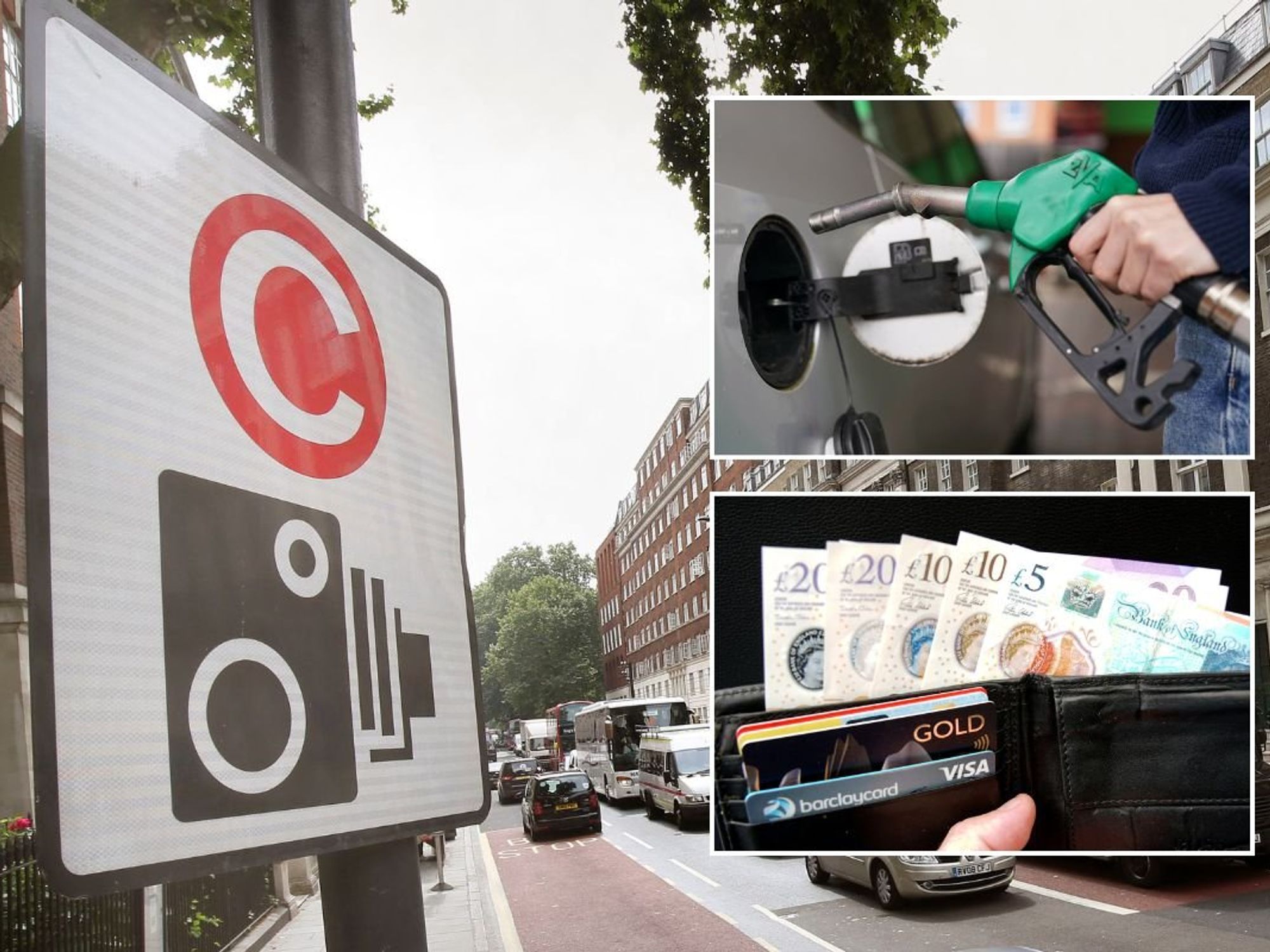Time to ditch Spotify? Apple Music is so confident in its latest feature, it's already enabled on your iPhone

Apple Music benefits from a slew of new features in iOS 26, including AutoMix and Lyric Pronunciation
|APPLE PRESS OFFICE

All products and promotions are independently selected by our experts. To help us provide free impartial advice, we will earn an affiliate commission if you buy something. Click here to learn more
AutoMix is ready to DJ your next party
Don't Miss
Most Read
With the arrival of iOS 26 earlier this month, iPhone owners worldwide were treated to a top-to-bottom redesign, a new Apple Games app, and the ability to quiz ChatGPT about anything on-screen via Visual Intelligence. With so much squeezed into this iOS upgrade, it was easy to overlook the new functionality included in Apple Music.
But there was a lot added to the music streamer.
Of the new additions, AutoMix makes the biggest impression. Using Artificial Intelligence (AI), this feature seamlessly blends tracks in your Playlist or Up Next queue to create a smooth transition from one track to the next. If you haven't heard the feature in action before, it's important to stress — this is not a revival of the simplistic crossfade feature first launched in iTunes back in mid-2006, AutoMix is much smarter than that.
The system analyses the characteristics of the song currently playing and the one due to follow it. Using techniques like beat-matching and time-stretching, AutoMix creates natural-sounding transitions that wouldn't sound out-of-place in a professional DJ set. It's truly impressive stuff.
And Apple clearly knows it.
In a sign of confidence in its new feature, AutoMix is enabled by default for anyone running iOS 26. It's a bold move to enable AutoMix on millions of devices overnight, but Vice President of Apple Music and International Content Oliver Schusser believes it's the right decision.
"AutoMix is something we've worked on for quite a while," he told GB News. "I think it's a great example of how Artificial Intelligence can make a wonderful experience for customers. We feel very strongly about it."
Mr Schusser says AutoMix was a popular feature in his teams during the development. When it was released as part of the Public Beta scheme for iOS 26 over the summer, millions of Apple Music subscribers had a chance to test it out. The Apple executive describes the reaction as "very positive".
That isn't surprising. It's only taken a few swipes on social media to find Apple Music listeners raving about the results from AutoMix and sharing some of the best mixes. There's an entire thread on Reddit where users have shared the best songs to queue-up for the most seamless DJ-like transitions.
AutoMix sometimes adds reverb to seamlessly blend tracks; other times, the vocals from one song stick around long after the bassline has faded away. The amount of time taken for these transitions varies dramatically — AutoMix can decide to skip past a lengthy instrumental introduction, with the blend ending the moment the lyrics kick in, similar to what you'd hear on the radio.
Since Apple's algorithms are analysing the tracks in real-time to pinpoint the best moment for the transition, AutoMix will blend the same two songs slightly differently each time.
Despite AutoMix being compared to a "DJ in your pocket," the Apple Music chief says the feature isn't limited to the sort of songs you'd expect to find during an Ibiza set-list. "Trust me, we've tried AutoMix on all genres," Mr Schusser reassured us "Of course, it works really well for Dance and Electronic music. It's great for a party."
"But it works just the same for easy listening or a chill playlist. It creates a beautiful, constant mix in the background — a next-level passive experience. We're super proud of it."
Although it's enabled by default, Oliver Schusser and his team have added some exceptions.
For example, AutoMix will never kick in when listening to an album because these are an "end-to-end creative thought from the artist". He explained: "The artists made a decision about the sequence, how the music should flow, and we decided to leave that untouched."
It's also deactivated on classical music, too. But those are the only real omissions, everything else — any other genre — the new DJ-inspired feature will start to mix between your tracks so you're never left with any silences.
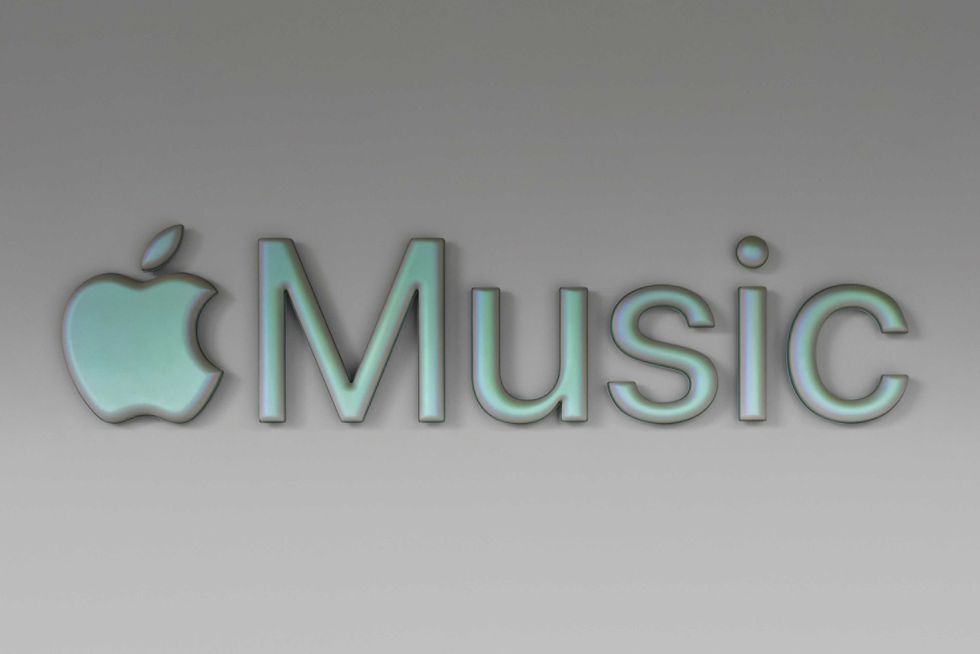
Apple Music competes directly with other streamers, like Spotify, Amazon Music HD, and Deezer
|APPLE PRESS OFFICE
In our time with the feature, it certainly feels like a game-changer — and we're pleased it's enabled by default so millions will experience it on day one. Since the launch of AutoMix, we've started building new playlists just to hear the transitions between our songs.
Whether streaming our most-played tracks from an Apple Watch during a morning jog, listening via iPhone during the commute, or queuing up a playlist on a MacBook in the office, AutoMix has added an unexpected dose of joy to our favourite tracks. It's good enough that we'd trust it to handle DJ duties at any party we're hosting.
from AppleMusic
Aside from AutoMix, other recent additions to Apple Music include Lyrics Translation, which is designed to help you understand what you're singing when you enjoy a favourite K-Pop or Eurovision song in a foreign language.
And if you want to improve your singing, Lyrics Pronunciation offers phonetic cues so you can sing along.
Apple says both features use machine learning to translate lyrics — with fine-tuning from language experts — to ensure the emotion, cultural context, and lyrical intent are fully preserved.
"We wanted people to experience music in a completely new way by understanding different languages," Mr Schusser explained to us. "The fact that AI made that possible was something we immediately jumped on."
Some record labels supply lyrics for their artists' tracks to Apple Music, but for others, the streamer has to rely on its own staff to decode what an artist is saying. Thursday is always a busy day for those on Mr Schusser's team, since new music is released on a Friday and Apple Music needs to launch with lyrics, album notes, and a complete list of credits for everyone who worked on the album.
It's worth the effort, with these features proving immensely popular with listeners. Mr Schusser revealed: "Lyrics is an example that people want a deeper connection to music. When 60% of our subscribers use the feature, it shows that music means something very special in their lives."
It's not just the words themselves either, with Apple Music now letting listeners follow lyrics line-by-line and beat-by-beat. If that sounds similar to karaoke, you're not wrong, which might explain the arrival of Apple Music Sing in the latest update.
Using Artificial Intelligence, Apple can isolate the vocal track in real-time, so you can lower the volume of the song's vocals and sing along. You can now use an iPhone as a microphone to amplify your voice through TV speakers.
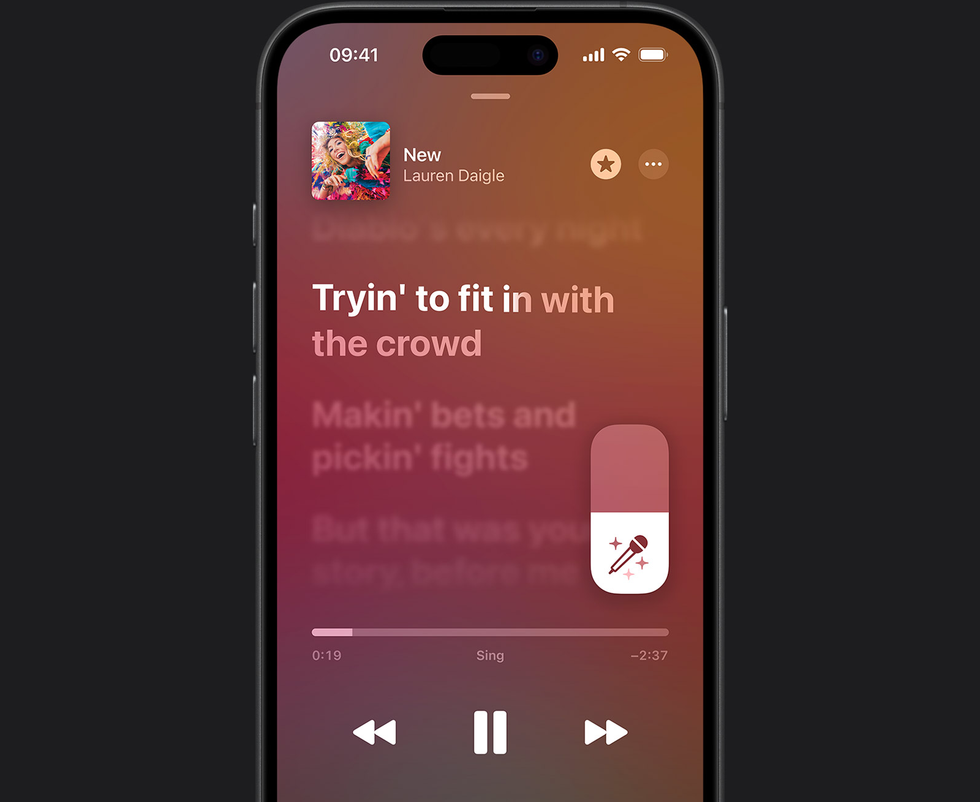
Using on-device AI, Apple Music can isolate the vocal track and independently control the volume, so there's no need for a separate singalong version of any of the millions of songs on the streamer
|APPLE PRESS OFFICE
Pair an iPhone with an Apple TV, and you can see yourself onscreen singing with the lyrics and a variety of visual effects behind you, too — transforming your smartphone and set-top box into a karaoke machine.
While Spotify has expanded well beyond music to include podcasts and audiobooks as part of its subscription service, Apple Music has stuck stubbornly to its namesake. The US technology firm has added music videos, live radio broadcasts, and on-demand shows from stars like Zane Lowe and Elton John, but there's no sign of Apple Music following its closest rival with the introduction of these other audio formats.
Instead, Apple Music is continuously adding new features to enhance that core experience. It debuted lossless audio quality in June 2021 at no additional cost to subscribers, alongside Spatial Audio with Dolby Atmos. The latter arrived with support from a few thousand songs, but was quickly seized upon by artists and record labels.
Apple estimates that between 85% – 90% of songs and albums in the charts at any given time are now delivered in Spatial Audio with Dolby Atmos on its music streamer. In comparison, Spotify recently confirmed that it would launch lossless audio quality soon — almost a decade after it first pledged to launch the feature.
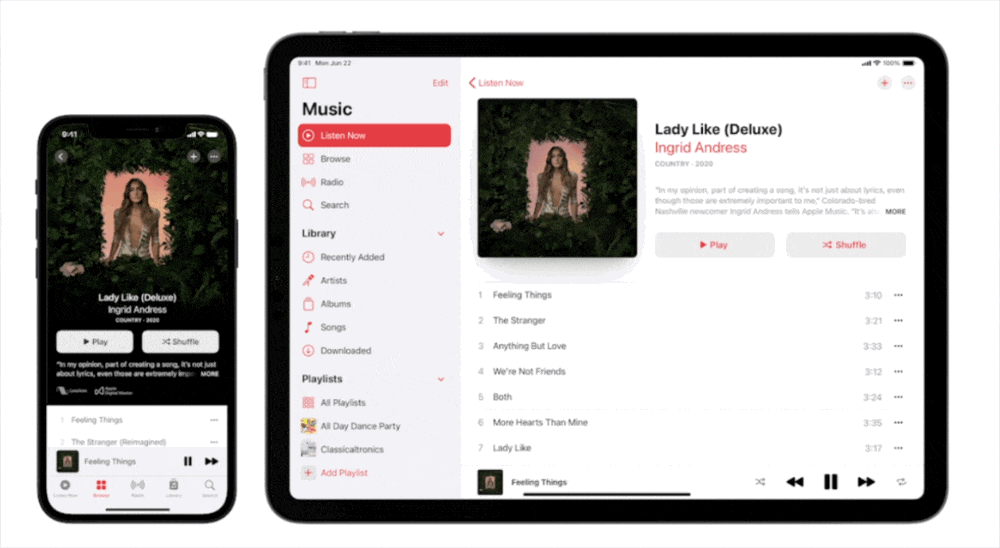
Record labels and artists can submit animated versions of their album artwork, which will be displayed throughout the music streaming service
|APPLE PRESS OFFICE
The iPhone manufacturer is confident that it'll see the same level of adoption for its new motion album covers, which add a little flicker of movement to the original artwork. This motion will appear on the Album Page on iPhone, iPad, and Mac, as well as on Smart TVs, Apple says.
With the update to iOS 26, this animation will take over every corner of your lockscreen when listening to music with the display locked. Every iPhone model announced this year packs an Always-On display, even the £799 entry-level iPhone 17 — a first for any non-Pro smartphone from Apple, so millions more will enjoy this trick.
Spotify has also moved away from static artwork when listening to music, with short, continuously-looping videos called Canvas showing on-screen when listening to albums or singles.
This is entirely optional, with Spotify users able to tap their picture profile in the top-left of the screen, navigate to Settings > Privacy > Content And Display and then toggling Canvas off.
Like the new Motion Album Artwork on Apple Music, artists themselves submit Canvas for their music, so with either option, you know you're watching something the people behind the music thought was a good fit.
When it launched, Apple Music set itself apart from rivals with a focus on hand-curated playlists compiled by a team of tastemakers hired across the globe.
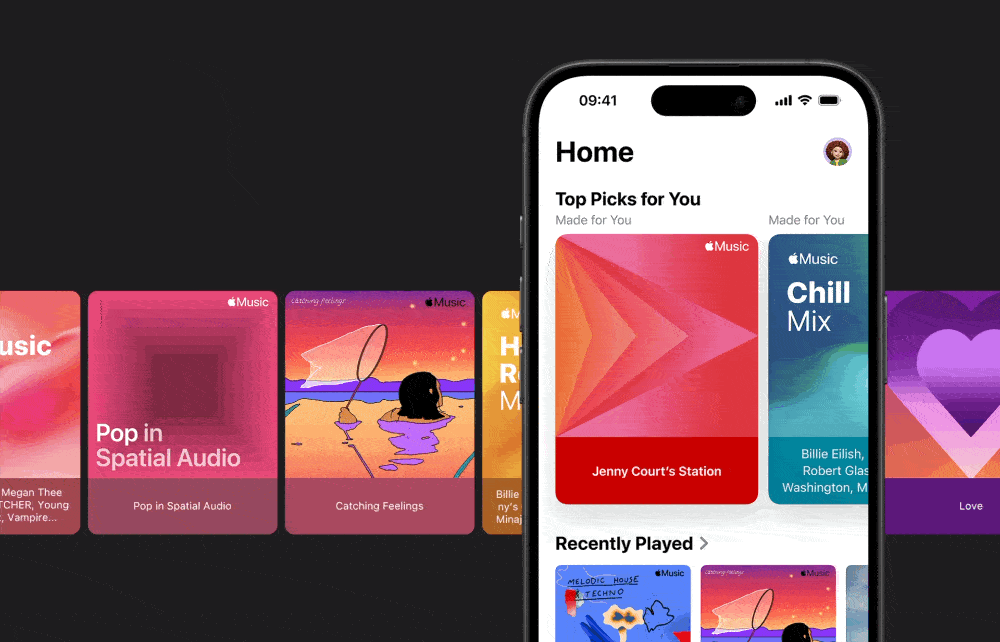
Apple Music offers a mix of handpicked playlists from tastemakers across the globe who work at the iPhone company and AI-powered ones that tailor recommendations based on your listening habits
|APPLE PRESS OFFICE
In the last decade since the launch of Apple Music, advancements in machine learning and AI have added new functionality to the service, like five customised playlists for subscribers (Chill Mix, New Music Mix, Heavy Rotation, Get Up!, and Favourites) that refresh once-a-week with new tracks based on your listening history or old faves from your library that you'd long forgotten.
But the human touch remains, with lengthy album notes that break down each track and include excerpts from exclusive interviews with Zane Lowe to explain the thinking behind new music. The hand-curated playlists remain, focusing on specific genres, themes, or even the behind-the-scenes talent like lesser-known songwriters and producers who created much-loved tracks.
It also offers Music Haptics, a way for users who are deaf or hard of hearing to experience music on iPhone. With this feature enabled, the Taptic Engine in iPhone plays taps, textures, and refined vibrations to the audio of the music. Music Haptics works across millions of songs in the Apple Music catalog and will be available as an API for developers to make music accessible in their apps.
But whether any of this is enough to convince millions to ditch Spotify remains unknown.
Spotify is still the most popular music streaming platform on the planet, with its annual Spotify Wrapped launch — when the app reveals your most-streamed songs, artists and podcasts over the last year — dominating social media feeds for days. It's also one of the few that still offers a free plan that's supported by adverts.
With years of data on your listening habits, playlists, and podcast subscriptions baked into the app, not to mention the social aspect of collaborating on playlists with friends or sharing a Spotify Wrapped... these services are incredibly sticky. Built directly into the Apple Music section of the Settings menu on iPhone, Apple has added a shortcut to third-party services that'll help export data from your Spotify library.
If you do want to subscribe, Apple Music is slightly cheaper at £10.99 a month.
There's a dedicated Student plan for £5.99 a month, or up to six people can share a Family plan for £16.99 a month — roughly £2.85 each.
Spotify costs £11.99 a month for an ad-free account, which also includes a limited amount of time to stream audiobooks. There's a £5.99 Student plan too, but the Family offering costs £19.99 a month. If you're in a couple, you can subscribe to Spotify Duo for £16.99, although only one person will unlock 15 hours per month of listening time from the audiobook catalogue.
If you want to experience Spatial Audio with Dolby Atmos on Apple Music, you'll need a subscription to the service and a compatible device and OS: iPhone, iPad, Mac, Apple TV, or Apple Vision Pro running the supported software versions. Playback works through headphones or speakers/receivers that support Dolby Atmos (many AirPods models also support Spatial Audio and head-tracking).
Meanwhile, AutoMix requires the latest software — iOS 26, iPadOS 26, macOS 26 Tahoe, or visionOS 26. As it stands, AutoMix works via Bluetooth headphones and speakers, but not via AirPlay to Sonos speakers. We'd expect this will be fixed in a future software update as Apple refines the functionality.
Our Standards: The GB News Editorial Charter








